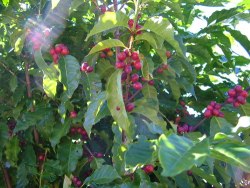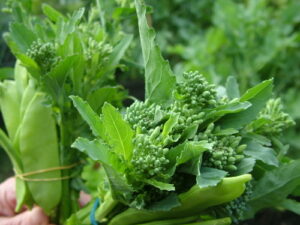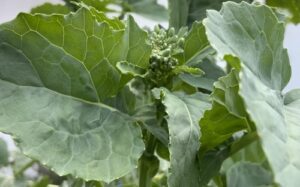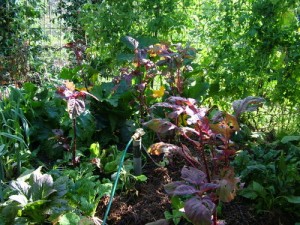We’ve just harvested the first of the coffee beans for the season, and now begins the slightly laborious process of processing them.
We have eight Coffea canephora (Robusta) coffee bushes. They are small trees or large bushes, that we keep pruned to about 2 metres tall. From them, we get about a third of our coffee supply. We could plant more, but we would have to be sure we would get around to harvesting, as it has the potential to become an environmental weed if the beans are let wild.
Robusta is generally considered inferior to Arabica – more full bodied and higher caffeine, but more bitter and harsher. But in an expresso maker like this, robusta is a very drinkable coffee, or at least ours is! And it has the advantage of being much hardier and less prone to pests and diseases.
 Coffee grows really easily in this Northern NSW climate – this region grows some of the world’s best. Although commercial producers like full sun (and lots of fertilizer) it is naturally an understory plant and will produce fine in light shade. It doesn’t cope at all with frost.
Coffee grows really easily in this Northern NSW climate – this region grows some of the world’s best. Although commercial producers like full sun (and lots of fertilizer) it is naturally an understory plant and will produce fine in light shade. It doesn’t cope at all with frost.
But getting it from bean to cup takes a few stages – worth it considering the price of coffee and the satisfaction in offering visitors a cup of home-grown. But you can see why coffee is expensive!
First step is to pick the beans. We get several picks, from August until October, usually a large bucket full each time.
 Next the beans have to be popped out of their cherries. This can be done by hand (and during football season my partner is usually more than willing to do it). But he has discovered that the plastic blade on the food processor does a good job without the requirement for him to watch football on TV.
Next the beans have to be popped out of their cherries. This can be done by hand (and during football season my partner is usually more than willing to do it). But he has discovered that the plastic blade on the food processor does a good job without the requirement for him to watch football on TV.
The beans inside are coated with a slippery gel, and the next stage is to ferment it off. The easiest way is just to soak the beans for a couple of days, feeling them every so often until the slippery coating rubs off with a bit of agitating.
They are then rinsed with several changes of water.
Next the beans have to be thoroughly dried. We spread them out on an old screen door on the verandah to dry – we have been caught out too often by an afternoon shower to leave them out in the sun! They take a few weeks, depending on the weather, to get down to 10% moisture content. They are ready when you cannot bite into a bean and create teethmarks.
That’s where we are up to now. After the beans are dried, they still need the parchment layer removed, also easiest done, we’ve discovered, in the food processor with the plastic blade. Then the green beans need to be roasted, ground, brewed, and finally, you get a wonderful cuppa out of it.
I shall keep you updated as the process continues!





You grow your own coffee? How cool is that! Look forward to following the process…
Please tell me you grow your own cacao as well.. 🙂
I’m sure you’ve said already, so feel free to send me to a post, but what gardening/climate zone are you in? If I could GROW our coffee, I’d TOTALLY do that, but we do get snow in the winter. Thanks!
Sadly no. We’ve tried carob, and by rights it should grow here, but we’ve never had a crop – probably something to do with pollination – I think you need two different varieties or something like that. As you might have guessed from this, I just haven’t ever got excited enough about carob to chase it! Chocolate though, that would be worth pursuing.
You have just given me a good prompt – I don’t think I have ever written properly about the climate zone I’m in. Something I need to do! I’m in subtropical Northern NSW, but my microclimate is high – nearly 300 metres above sea level – and frost free. Spring is warm, dry and windy, summer hot with unreliable thunderstorms, autumn warm and wet, winter cool but not cold. Coffee is a tropical/subtropical crop. It won’t cope with freezing temperatures, so I don’t know how you’d go. You would have to find a very warm microclimate on your site. But even then, I think if you get too far away from the equator, the day length becomes an issue.
Ah, to live somewhere subtropical again…. I want to live somewhere near Bangalow, and grow an amazing array of wonderful things, like coffee!
Makes you realise how much goes into making coffee that people consume daily without even thinking about it… thanks for a great post, and great photos too!
Pingback:Growing Our Own Coffee Part Two
Pingback:This year’s coffee
Hello I love reading your blog! We have Arabica coffee trees and I will soon be in the process of making coffee once I’ve picked the beans. I was just wondering if you discard the beans that float? I have read that apparently the floaters are no good but I would feel bad for throwing them out….
The beans that float are light, and that generally means that even if you don’t discard them, you get nothing out of them. Once they are husked and dried and roasted, they crumble away to nothing.So you might as well discard them and save the work!